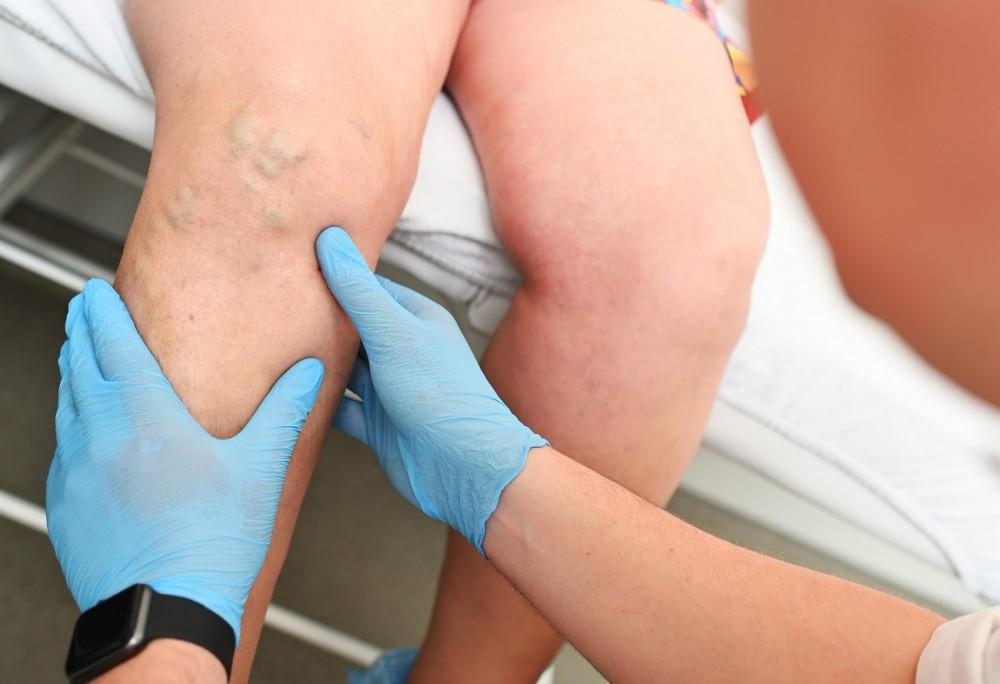
Most People Miss These Signs of Vein Disease

Perhaps you’ve had a busy day, and your legs are tired. You’ve been on your feet, and you notice a little bit of swelling around your ankles. Your legs show some spider and varicose veins, but your grandparents had them, so perhaps it’s just a genetic cosmetic condition.
All these easily explained conditions may be pointing toward vein disease. In the early stages, these symptoms are often mild and easy to ignore. Later, pain and skin changes may develop, and the diseases causing them might not be as easy to treat as they are today.
MD Vein & Skin Specialists can diagnose the subtle symptoms of vein disease before more serious issues emerge. Dr. Clement Banda and our team in Columbia, Maryland, offer advice about the signs of vein disease that most people miss.
Understanding veins
Veins are thin-walled blood vessels that return blood to your heart and lungs. Along their length, veins feature a series of valves that support the one-way movement of blood. These valves can fail, and when surrounding muscles relax, blood can travel backward and pool, building up pressure due to the weight of collected blood.
This is most evident in the lower legs since you’re fighting the effects of gravity throughout the day. Over time, diseases of the veins can develop because of these conditions. Venous disease is common. About 30% of American adults have some degree of varicose veins, which are often harmless. Other vein disorders, though, can be serious and even life-threatening.
Signs of vein disease
Because the fight against gravity is toughest in the legs, this is where most signs of venous disease emerge, though sometimes it’s the source of unexplained pelvic pain for women. The severity of symptoms isn’t always an indicator of the hazards of your condition. Let’s look at three of the most common forms of vein disease.
Varicose veins
The backward pressure of blood caused by failing veins near the skin’s surface creates the characteristic gnarled and bulging appearance of varicose veins. For many people, these are simply cosmetic problems, but in some cases, they can be an indicator of more serious conditions.
Common signs that your varicose veins may need medical examination include:
- Increasing discomfort and pain
- Generalized swelling in the ankles and lower legs
- Leg cramps
- Achy, heavy feelings in the legs
- Itching or burning sensations
- Skin discoloration
Symptoms tend to be lightest in the morning, increasing in intensity throughout the day.
Chronic Venous Insufficiency (CVI)
Failing valves also cause a more serious disease called chronic venous insufficiency, of which varicose veins are a symptom. As well as the symptoms that accompany varicose veins, you may notice more advanced skin problems, including color and texture changes that make the skin on your legs shiny or leathery in appearance. The skin may be dry and itchy with flaking. Another symptom of CVI is slow healing leg ulcers, wounds that may not be associated with cuts or other injuries.
Deep vein thrombosis (DVT)
While the obvious varicose veins are superficial, deep veins can be affected, too, leading to potentially dangerous blood clots. Deep vein thrombosis can present signs like pain, swelling, and feelings of pressure, but it can also reach advanced stages with no symptoms.
It’s estimated about 50% of DVT patients have no symptoms through the course of the disease, which can cause deadly pulmonary embolisms without treatment. Superficial veins can also form blood clots. Though these are rarely dangerous on their own, they could be a sign you have DVT.
It’s never too soon to discuss vein symptoms with MD Vein & Skin Specialists. Book an appointment online or by phone to set up your consultation today.
You Might Also Enjoy...


Why Won’t My Leg Wound Heal?

Post-Inflammatory Hyperpigmentation: Why Your Acne Leaves Dark Spots

How to Tell If Your Leg Pain Might Be from Varicose Veins

Skin Cancer Warning Signs That Don't Look Like Typical Moles


